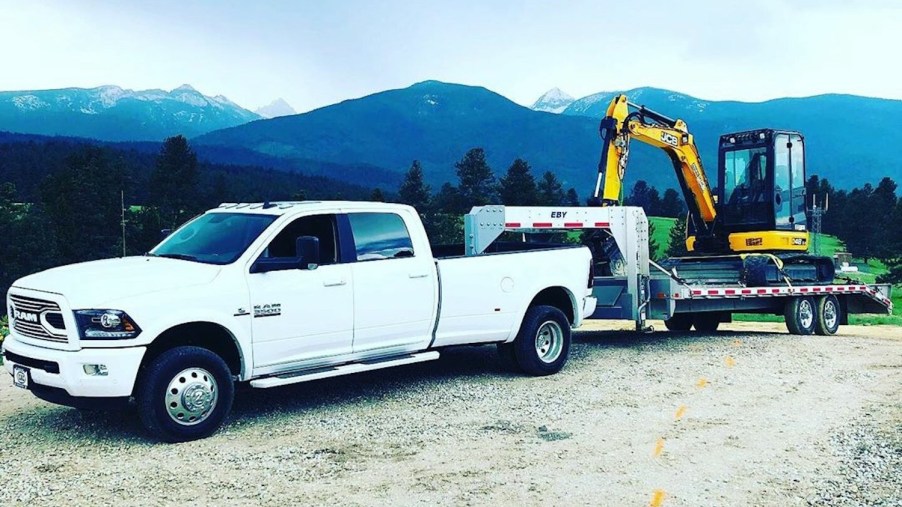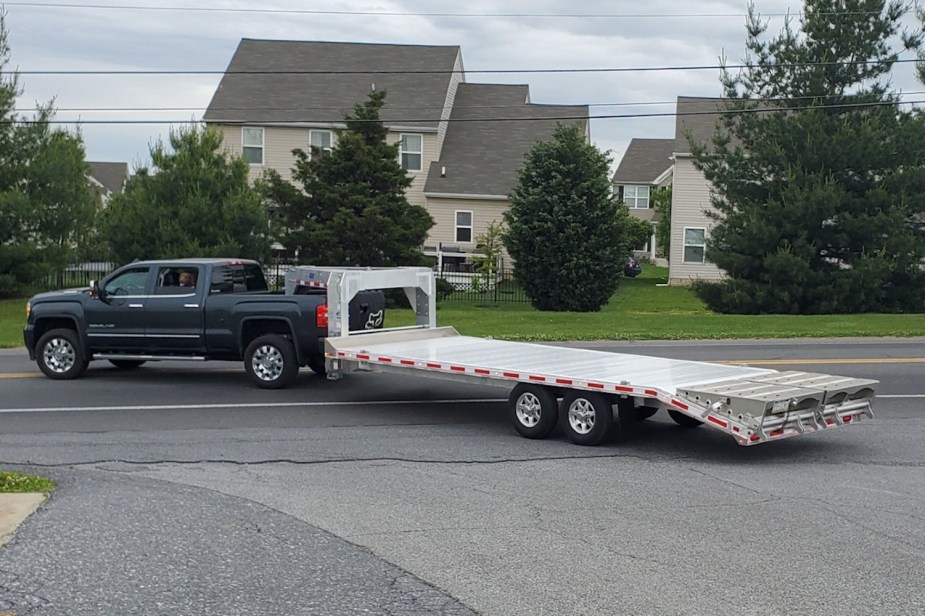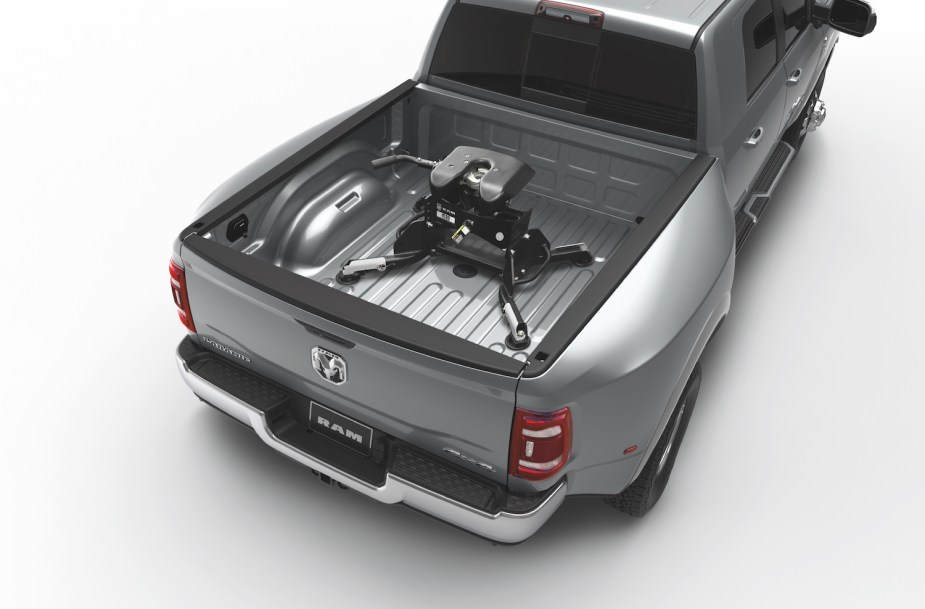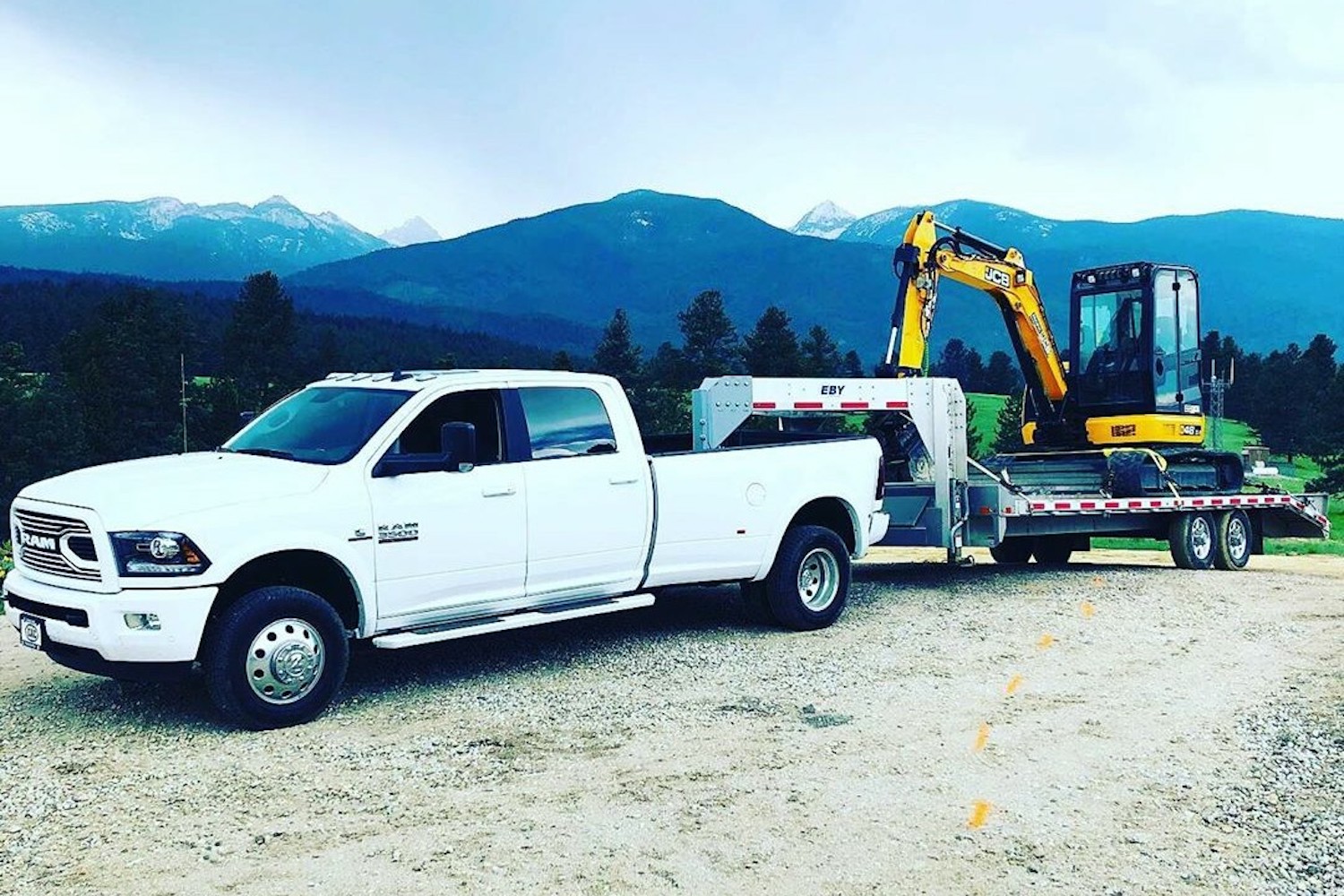
Why Do Some Pickup Trucks Have a Trailer Hitch in the Center of Their Bed?
Have you ever noticed pickup trucks cruising down the road, pulling trailers hitched up in a very odd way? I’m referring to the trailers with the tongue that arches over the truck’s tailgate and attaches to the middle of the pickup bed. This is either a 5th wheel or gooseneck trailer hitch. It essentially transforms a pickup into a mini semi truck to improve its performance in two major ways.
What is the point of gooseneck trailers?
A gooseneck trailer setup, named because of the curved neck of the trailer’s tongue, moves the truck/trailer axis forward towards the middle of the pickup. This better distributes the trailer’s weight between the axles. It also increases the entire rig’s turning axis considerably.

A gooseneck trailer hitch mechanism is fairly simple. The trailer has a long, curved tongue that attaches to a regular trailer hitch ball mounted in the middle of a pickup truck’s bed.
Think of the improved weight displacement this way: the tongue of a loaded trailer can way hundreds, even thousands of pounds. When you hook this all up to a trailer hitch ball mounted on the bumper of a truck, the weight is far from evenly distributed. This can actually lift weight off the front wheels, making it more difficult to brake and steer. If you place all the weight of a trailer’s tongue between a truck’s axles, then the truck can handle the load much more smoothly–according to HowStuffWorks.com.
In addition, if a truck takes a sharp corner with a trailer attached to its bumper, the trailer must follow it around the corner. If the trailer is attached to the center of the truck, the truck can take a tight corner, and the trailer will essentially follow the center of the truck. This enables better control of the trailer. It also prevents the truck and trailer from “jackknifing” or colliding when the truck takes a tight corner.
Why is it called the 5th wheel?
A 5th wheel trailering setup gets its name because the pivot point in the pickup bed spins like a fifth wheel–in addition to the four the truck has on the ground. And because a 5th wheel trailer has a kingpin that slots into jaws in the truck bed, it operates like a wheel’s axle.

A 5th wheel hitch is essentially a tower in a pickup truck bed. It ends in a clamp to hold a special 5th wheel trailer. The 5th wheel trailer has a long enough tongue to reach over the truck’s tailgate. It ends in a vertical “kingpin” which slots into the 5th wheel hitch.
The technology used in a 5th wheel is similar to a semi truck. The largest trucks you see on the highway also have a kingpin and a hitch with a set of jaws.
Which is safer, fifth wheel or gooseneck?
Because it has fewer moving parts, the beefiest gooseneck hitch can pull a few hundred pounds more than a 5th wheel (30,00 pounds vs 27,000). But by moving the axis point higher up, a 5th wheel is a much safer way to carry a top-heavy trailer. This is especially true with a crosswind.

A 5th wheel is a more advanced trailering solution. With its higher axis point, it gives the driver better control over a tall trailer. It also suffers less noise and vibration than a gooseneck while driving down the road. This is because a gooseneck hitch is essentially a regular trailer hitch ball attached to the center of a pickup bed.
Next, learn why some pickup trucks have four rear tires or see a Gooseneck hitch vs a regular bumper pull in action in the video below:



